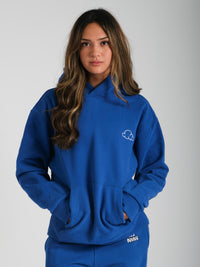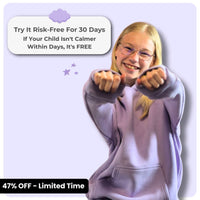The Role of Fidget-Friendly Clothing in Supporting Kids with ADHD
Parenting a child with ADHD often means finding creative ways to help them navigate their world. From managing sensory overload to staying focused in school, parents and educators look for tools to support these unique needs. One innovative solution gaining attention is fidget-friendly clothing—apparel designed to merge functionality with fashion, offering kids discreet tools to channel their energy and focus.
Here’s how fidget-friendly clothing is making a difference for kids with ADHD and why it’s a game-changer for both children and their families.
What Is Fidget-Friendly Clothing?
Fidget-friendly clothing integrates sensory features such as built-in fidget tools, textured fabrics, or discreet elements that kids can engage with throughout the day. For example:
- Hidden stress balls in cuffs or pockets
- Velcro strips for tactile engagement
- Zippers or buttons designed for repetitive motion
- Stretchy or textured panels for sensory stimulation
These features allow children to channel restless energy in a way that doesn’t disrupt their activities or draw unwanted attention, helping them stay calm and focused.
Why Is Fidgeting Important for Kids with ADHD?
Fidgeting often gets a bad rap as a sign of distraction or misbehavior, but for kids with ADHD, it’s actually a self-regulation strategy. Research shows that physical movement can enhance focus and improve cognitive performance by providing necessary sensory input.
Fidgeting benefits children by:
- Improving focus: Engaging with a fidget tool can help redirect excess energy, making it easier to concentrate on tasks like reading or listening.
- Reducing anxiety: Physical activity, even small movements, can ease feelings of restlessness and tension.
- Boosting confidence: When kids can self-regulate without drawing attention, they feel more in control and capable.
How Fidget-Friendly Clothing Helps
Fidget-friendly clothing takes these benefits a step further by embedding fidget tools directly into everyday wear. This approach offers several advantages:
-
Discreet Support: Kids can fidget without standing out, which is especially helpful in classroom settings or social situations where traditional fidget tools might draw attention.
-
Portability: Unlike standalone fidget toys, clothing is always with the child, ensuring they have access to a calming tool whenever needed.
-
Minimized Disruptions: Fidget-friendly apparel encourages subtle movements, reducing distractions for others while still meeting the child’s needs.
-
Stylish and Functional: These clothes blend fashion and functionality, helping kids feel comfortable and confident in what they wear.
Success Stories from Parents and Educators
Parents have reported significant improvements in their children’s ability to manage tasks like homework or car rides when wearing fidget-friendly clothing. Teachers also find these garments reduce classroom disruptions, allowing all students to focus better.
For instance, a parent shared that their child loved a hoodie with a stress ball hidden in the cuff—a feature that turned fidgeting into a soothing activity during stressful moments.
What to Look for in Fidget-Friendly Clothing
If you’re considering fidget-friendly clothing for your child, look for these key features:
- Durable Materials: Kids will use these items frequently, so quality matters.
- Comfortable Fit: Ensure the clothing is cozy and non-restrictive.
- Engaging Features: Choose designs with fidget elements your child will enjoy, such as textures, zippers, or built-in stress tools.
- Stylish Designs: Kids want to feel good about what they wear, so pick options that match their personal style.
The Future of Fidget-Friendly Fashion
As awareness of ADHD and other neurodiverse conditions grows, so does the demand for innovative solutions like fidget-friendly clothing. By blending function with style, these garments empower kids to embrace their differences while meeting their sensory and focus needs.
For parents, caregivers, and educators, fidget-friendly clothing represents more than just apparel—it’s a step toward inclusivity and understanding, helping kids with ADHD thrive in their daily lives.
Final Thoughts
Fidget-friendly clothing is more than a trend; it’s a meaningful innovation designed to support kids with ADHD in practical, accessible ways. By incorporating sensory tools into everyday wear, these garments provide a simple yet effective way to help children manage their energy, focus on tasks, and feel more confident.
Whether it’s a hoodie with a hidden stress ball or pants with textured panels, this apparel reminds us that small changes can make a big impact. As parents and educators, embracing tools like these can empower kids to succeed in their unique way.
Would you consider trying fidget-friendly clothing for your child? Let us know in the comments below!


